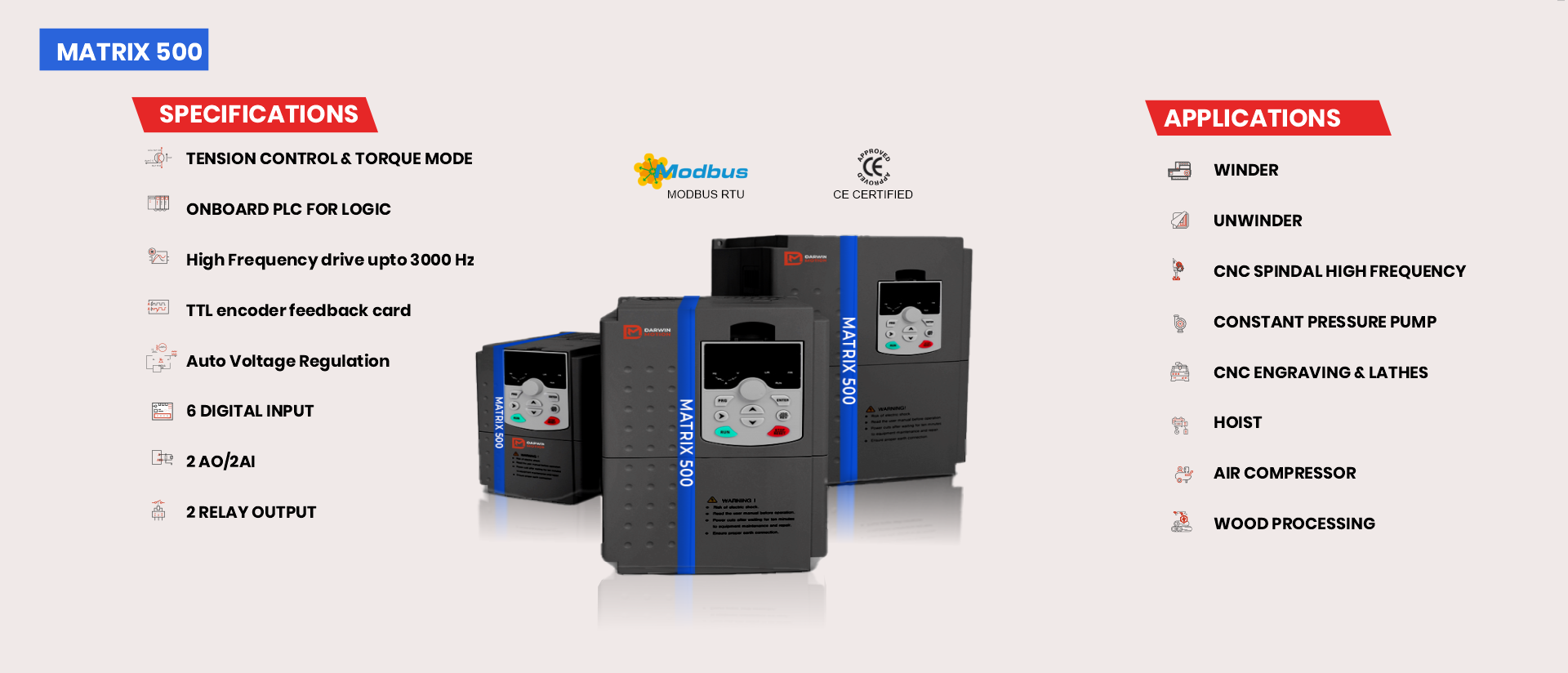Posted on 27th Apr 2024

In the realm of industrial automation, where precision, efficiency, and reliability are paramount, Programmable Logic Controllers (PLCs) serve as the unsung heroes. These compact yet powerful devices form the backbone of automated processes in industries ranging from manufacturing and energy to transportation and beyond. Let's delve into what PLCs are, how they work, and their significance in modern industrial settings at Darwin Motion blog.
A Programmable Logic Controller (PLC) is a specialized computerized device used to control and automate machinery and processes in industrial settings. It operates by continuously monitoring inputs from various sensors and switches, executing user-defined logic programs, and controlling outputs such as motors, valves, and other actuators to automate specific tasks.
According to Darwin Motion (vfd manufacturers in India) PLCs are designed to withstand harsh industrial environments and are equipped with input and output (I/O) modules, a central processing unit (CPU), memory, and communication ports. The core functionality of a PLC revolves around its ability to process inputs, execute logic, and generate outputs in real-time.
Input Processing: PLCs constantly scan input devices such as sensors, switches, and meters to receive information about the current state of the controlled process. These inputs are then processed based on the logic programmed into the PLC.
Logic Execution: The logic programmed into the PLC dictates how it should respond to different input conditions. This logic is typically created using specialized software, often based on ladder logic, function block diagrams, or structured text programming languages. The PLC evaluates the input conditions against the programmed logic and determines the appropriate actions to take.
Output Control: Once the logic is executed, the PLC generates output signals to control actuators such as motors, valves, and solenoids. These outputs are precisely timed and coordinated to ensure that the controlled process operates efficiently and safely.
Communication: PLCs often communicate with other devices and systems, such as Human-Machine Interfaces (HMIs), Supervisory Control and Data Acquisition (SCADA) systems, and other PLCs, using various communication protocols. This enables seamless integration within larger automation networks and facilitates data exchange for monitoring, control, and analysis purposes.
The widespread adoption of PLCs has revolutionized industrial automation in several ways:
Flexibility: PLCs offer unparalleled flexibility in programming and reprogramming, allowing manufacturers to quickly adapt to changing production requirements without the need for extensive rewiring or reconfiguration of control systems.
Reliability: PLCs are renowned for their robustness and reliability, making them ideal for mission-critical applications where downtime is not an option. Built-in diagnostics and redundancy features further enhance system reliability and uptime.
Efficiency: By automating repetitive tasks and optimizing processes, PLCs help improve overall operational efficiency, reduce labor costs, minimize waste, and enhance product quality.
Safety: PLCs play a crucial role in ensuring the safety of industrial processes by implementing safety interlocks, emergency shutdowns, and other protective measures to prevent accidents and mitigate risks to personnel and equipment.
Scalability: PLC-based control systems can easily scale from small standalone machines to complex interconnected systems spanning entire manufacturing plants or industrial facilities, providing scalability and flexibility to accommodate future growth and expansion.